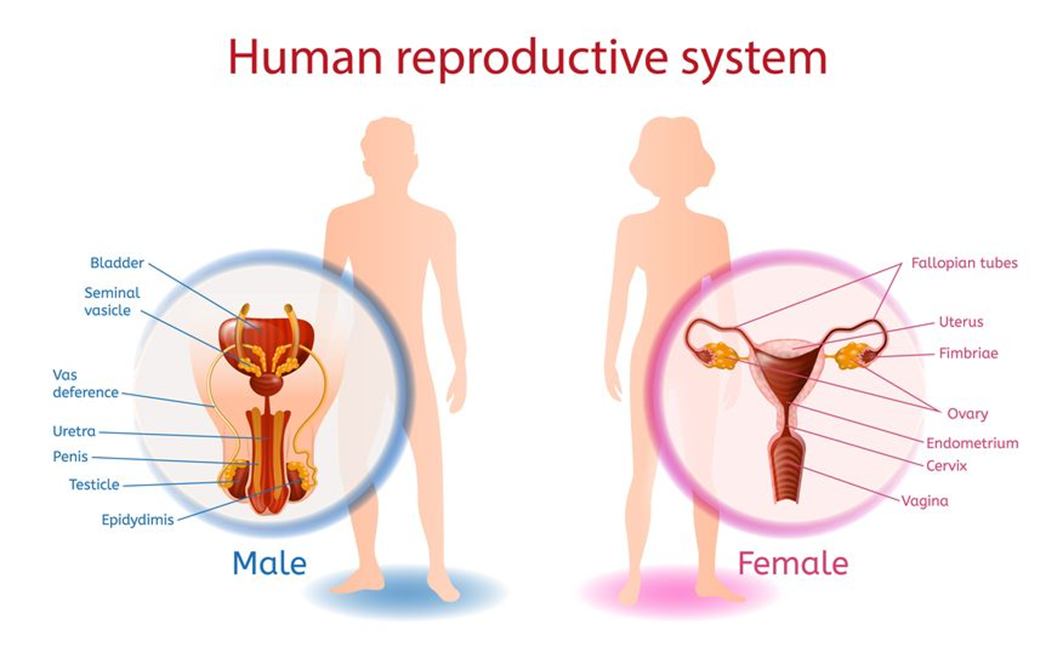Note that your final mark will not be saved in the system.
6. Reproduction in humans GapFill
You must fill all the gaps before clicking ‘Check Answers!’

Reproduction in humans
Humans, like most other complex organisms, reproduce sexually. This means that specialised cells called are needed from a male and a female to produce a new baby.
Human sexual reproduction requires a male and a female partner. These partners must have sexual intercourse to pass on the genetic information needed to create new human life.
This genetic information is contained in the nucleus of ova (egg cells) and .
The male reproductive system
A man has a penis and two testes.
The testes are contained in a sac of skin called the , which keeps them in place outside the body. This maintains a temperature of about 35 ºC, which is a bit lower than normal body temperature, and is ideal for sperm production.
The testes produce millions of small mobile sperm cells. They also produce male .
The sperm travel up the sperm duct. This is a hollow tube, and is called the vas deferens in some diagrams. The sperm ducts start in each testis and join together inside the body. The sperm duct goes past glands, which supply a fluid for the sperm to swim in, and then into the urethra. The mixture of sperm cells and fluids released by a male is called .
The urethra is the tube that runs down the middle of the and takes sperm into the woman’s vagina.
The female reproductive system
A woman’s body has a muscular passage called the vagina, that receives sperm during intercourse. It is connected to the womb or .
Women have a urethra that is separate from the vagina and is only for passing urine.
Inside her body are the ovaries. These produce female hormones and contain the ova (eggs).
The ovaries become active at puberty and release eggs for the next 30−40 years.
Most women release one ovum each menstrual cycle. The ovum travels down the to the uterus. If there are sperm in this structure, the ovum might be fertilised.
Fertilisation
Fertilisation takes place in the oviduct. Sperm swim up into the oviduct and surround the .
The head of the sperm burrows through the egg’s cell membrane. The fertilisation process is when the of the egg and the sperm nucleus fuse together to form the fertilised egg, or zygote.
The fertilised egg begins to develop into a new human life by cell division, at the same time it passes down the oviduct into the uterus and implants itself into the uterus lining. At this stage it is called .
The cells continue to divide and specialise into tissues and organs. After eight weeks growing in the uterus it is called a fetus.
The fetus grows inside a sac of fluid, which protects it from accidental bumps. It gets oxygen and nutrients from its mother’s through a structure called the placenta.